Modeling nails using nail tips is one way to build artificial plates. It allows you to realize the dream of many modern women who want to have beautiful and elongated nails. And if the process of building someone seems too complicated and too much for independent execution at home, it is worth dispelling this myth and dwell on the main nuances of building.

Features of the technique
Nail extension using nail tips is a painless and safe procedure. Of all the known building technologies, the option of using special plastic blanks is simpler. Each woman is fully capable of mastering this working process, and for the first time, the entire procedure will take no more than a few hours, given that imperfect marigolds will have to be lengthened.
Work with tips can be designed for contact or non-contact zone. Such zones differ in size: they are small, large, deep, shallow. We have to work with the option that suits the individual characteristics of natural nail plates more than others. For example, in the case of a short nail bed and a large bend downward, you will have to work with the option with the smallest contact area.
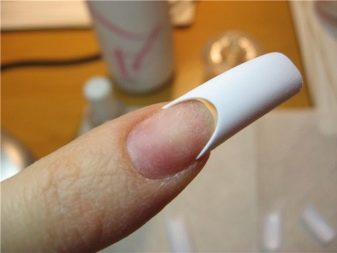
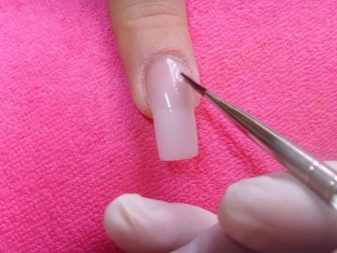
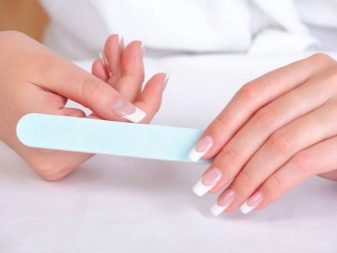
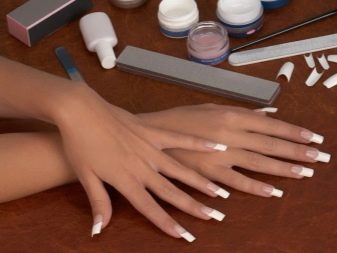
However, experienced craftsmen today got the hang of working with tips that have any contact zones, so it’s not at all difficult to cut the right shape.For this reason, among the master’s sets there are often not all varieties: they simply can be idle. Although in fairness it is worth noting that the masters still have options that do not need to be cut out, because they are very convenient in work and do not allow distorting the correct shape.
This technique is somewhat different from nail extension through forms. It is used when natural nails are too narrow or short. This is a great option to save the situation on the transformation of the nails of “rodents”, because it is impossible to build up nail plates bitten to the root with shapes. They work in this technique even when their form is far from the desired ideal, and also the sides of the plate are very uncomfortable.
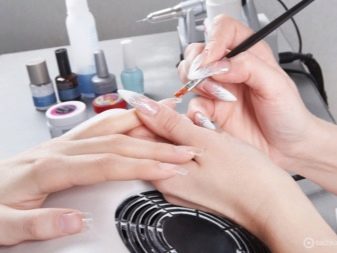
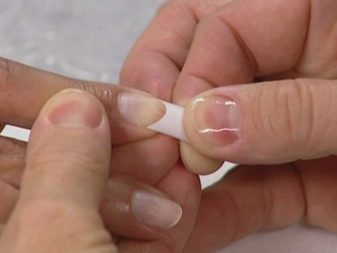
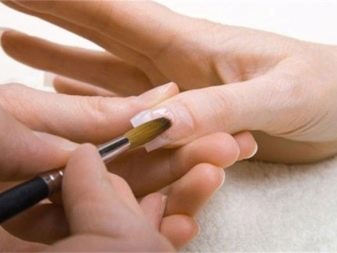
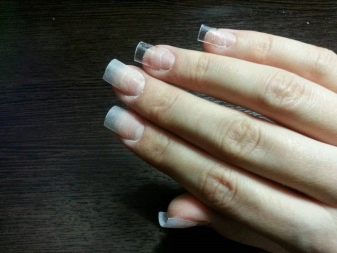
Varieties of tips and tips for choosing
Tips in translation mean "tip". These are plastic blanks in the shape of a nail, which differ in size and shape. In fact, these are peculiar patterns that will give the necessary shape to the modeling tool in the process of increasing the length. They will also correct the convexity of the nail plate, avoiding the effect of a biting nail and too much convexity.
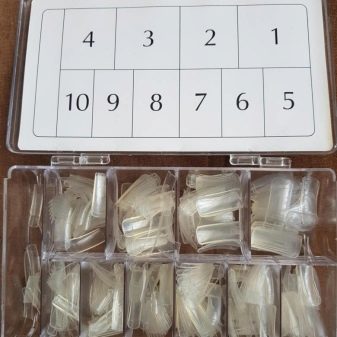
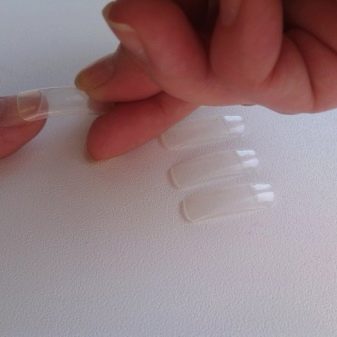
By appointment
It is a mistake to assume that all tips are the same. In fact, they can differ in color and purpose, because they are selected in accordance with what the final method of manicure will be. Transparent options and patterns of natural color are intended for building and further covering the created base with gel polish. If the French design is planned, they differ in thickness. Compared to other varieties, they are thinner.
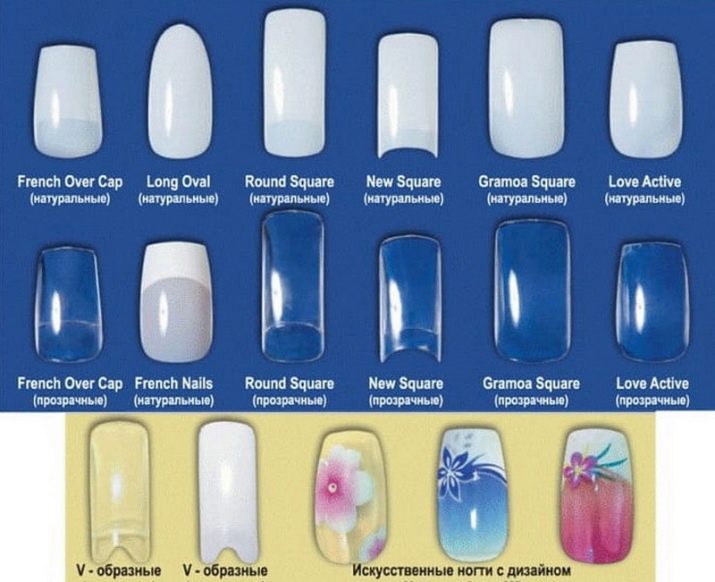
And also in the line there are varieties with a colored background and a finished design. These are, in fact, ready-made solutions, although if you wish, the former can be decorated with some kind of print, and the latter can be simply covered with transparent varnish. In addition, the options can be universal, with a sufficient bend and a large bend. The bend of the frame is necessary so that the extended nails look beautiful and natural.
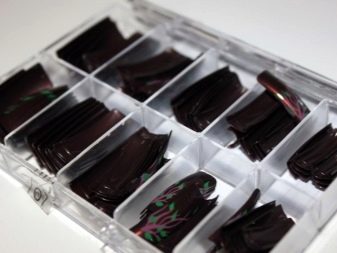
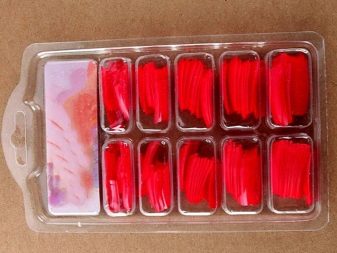
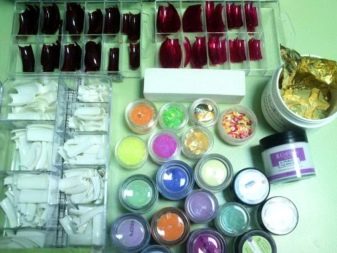
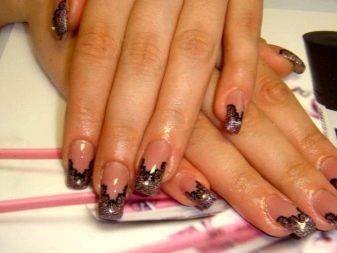
In shape
The shape of modern tips is variable. On the shelves of brands you can find different options for every taste. To date, there are 5 varieties of the shape of tips.
- In the classic version, these are blanks with a natural and smooth bending shape. As a rule, they are sold in sets with affordable prices. Such varieties are often used by nail service professionals, performing nail extensions to clients.
- Other options include direct tips that do not have a contract area. For this feature they are called non-contact, they are extremely convenient for performing a service jacket. Such varieties are also inexpensive, and buying them today is not difficult. On average, a pack of one hundred pieces will cost 150 rubles.
- When you need to create a special narrowed form, get tips of a narrowed type. They can be used in the work of building and shaping the stylet, forms of bridget and cat’s nails.
- Many people want to make an “American” shape. In this case, you need to buy tips of a curved type.
- The last variety is the tips for almond shape. These products allow you to quickly build the correct almond shape. They are characterized by different lengths, whether or not they have a contact zone. Their cost is approximately the same as the cost of blanks for stylet (about 150 rubles for 50 pieces).
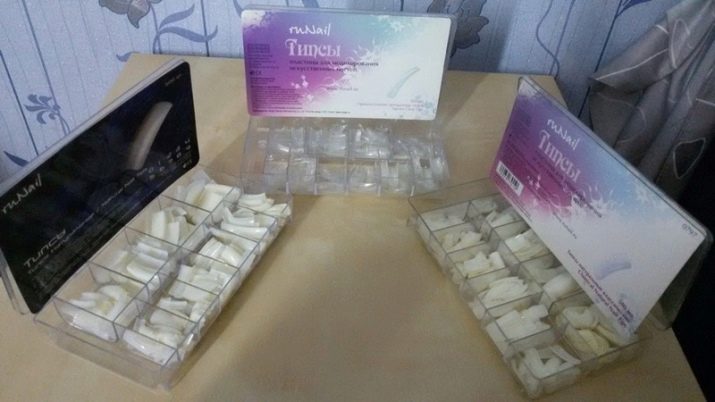
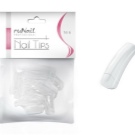

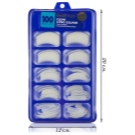
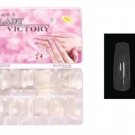
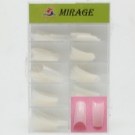
Important! In general, any of the options may vary in length, which is usually indicated on the package. Masters usually acquire long frames, which allow not to limit the desired level of length.
According to the materials of manufacture
Tips for building nails are made of different material. For example, the so-called liquid varieties have become one of the solutions that are quite popular today. These are reusable options that are made from special polymer raw materials and are characterized by a flexible structure.For beginners, this is the most convenient and easiest way to build nails. It does not require a large number of tools and materials, although it can not do without a special drying lamp, which is usually used when working with gel polish and gel.
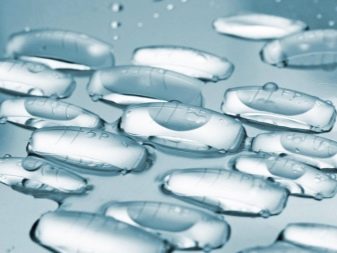
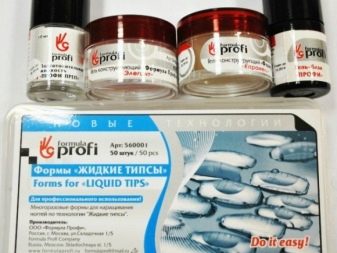

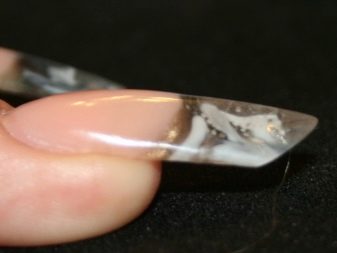
Tips are made of plastic, nylon and polyflex. Each type of material has its own nuances. For example, plastic products are considered quite durable and preferable in work. Plastic is resistant to temperature, it is easy to wash, it is convenient in the process of building. If you need to build up nails with gel, then it is better to choose options from polyflex. Such solutions are quite flexible, they are resistant to acetone. As for the nylon varieties, they are not suitable for beginners, since they can be problematic in fixing, while it is worth noting that nylon keeps its shape well.
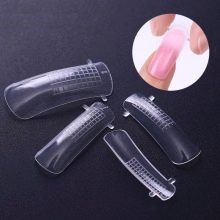
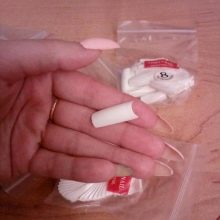
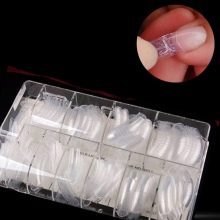
How to choose?
An inexperienced woman is easy to get confused in the sea of offers, which showered buyers with various brands. However, there are several nuances that you can pay attention to when buying tips.
- The absence of sharp edges minimizes the risk of personal injury. It is important that there are no nicks or roughness or even scratches on the inside of the elements. This is a clear marriage that will ruin all the work. When forming the extended nails, a marriage of the coating will be created, which is far from always possible to fix by sawing.
- We can not ignore the thickness of tips, as well as their strength. To take really good products, you need to choose from among the thin and elastic. A good option would be to bend and take its original shape. If you choose a variety with a ready-made design, you need to understand that the greater the thickness of the material, the worse it will look on the hands of a woman.
- Tips are not the material to save on. Therefore, preference when buying should be given to manufacturers with a good reputation as professionals in nail service.
- If you could still try on the purchase, then we definitely acquired the ideal types of frames. To find your option that would ideally fit on the natural shape of the nail plate and thereby simplify the process of building, you should pay attention to size. It is better that the frame was slightly larger than a nail, since a small template is simply not useful.
- You can purchase sets with a large number of tips. Among them, it is easier to choose options that are better suited to the characteristics of specific nail plates.
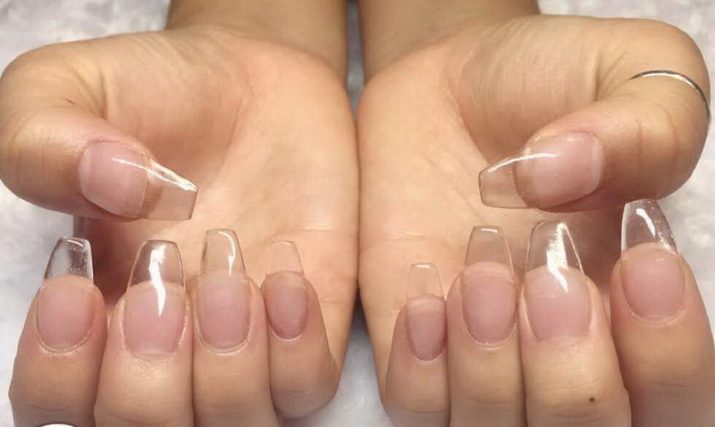
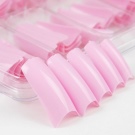
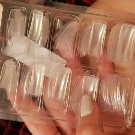
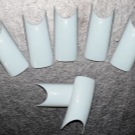
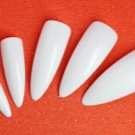

Necessary tools and materials
Everything you need to build nails for nail tips will come from which frames and materials are used. It is worth noting that the process is performed by gel or acrylate. A drying lamp is needed specifically for the first material, because without it it will not dry. The device can be ultraviolet, LED or combined. In addition to the lamp, you have to use a brush.
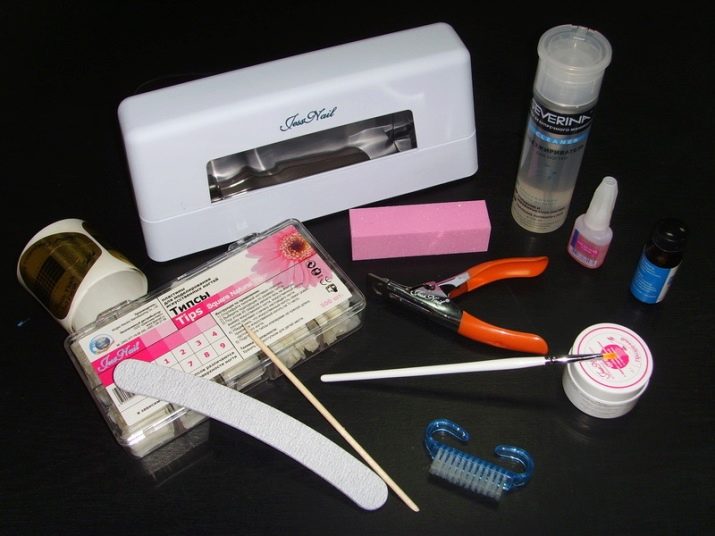
As for the acrylic extension method, here you will have to work faster, while trying not to make mistakes. The acrylate will dry itself without any help. In general, the tips themselves may be needed in the work, moreover, of different sizes, special glue for such frames, the tip cutter fixture. Do not do without an antiseptic, which will have to process your hands. In addition, it is worth taking care of the presence of a file with an abrasive of 180/100 grit, napkins without lint, alcohol, a brush to remove dust, cuticle oil.
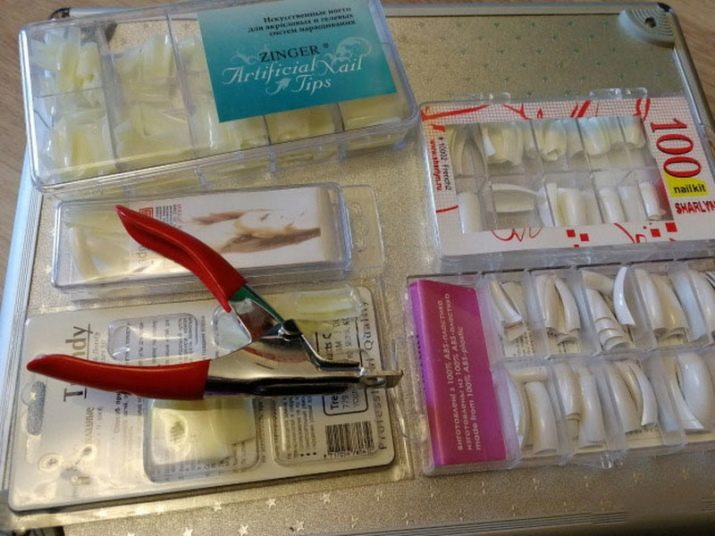

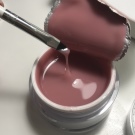
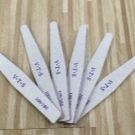
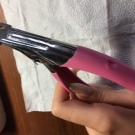
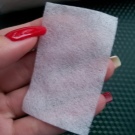
Preparation for the process
Regardless of whether it is intended to use gel or acrylic during nail extension, without a high-quality preparation of the nail plates, further workflow will become impossible. In fact, the preparation will be a hygienic manicure. An antiseptic should be used first.To simplify, reduce the pain and trauma of the procedure, a special cuticle remover can be applied to the skin around the nails. In the future, it will contribute to the painless removal of excess skin. Sometimes it is first necessary to remove the extended nails, someone has to remove the pigmented coating.
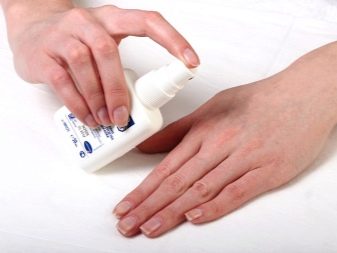
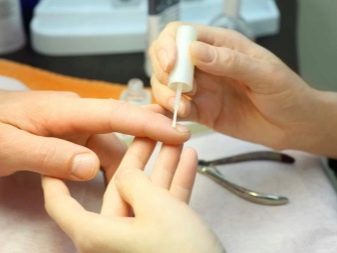
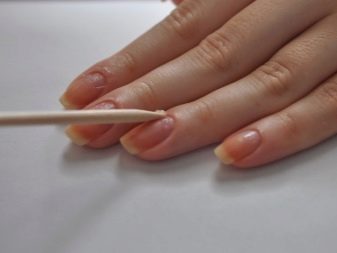
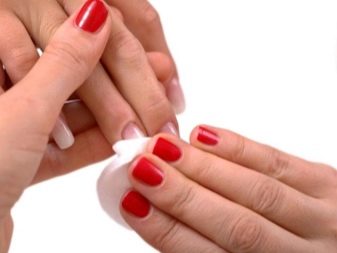
It is important to completely clean the surface of the nails, because the quality of adhesion to the modeling tool, as well as the durability of the extended plates, will depend on this.
After the cuticle and pterygium are removed, an orange stick is passed along the contour of the plates, checking with its help the quality of scrubbing. Then they proceed to remove the shiny layer of nails. This is necessary in order to increase grip, passing along the surface with a soft grinder. After getting rid of the gloss, the dust is brushed off the nails, then degreased. On this preparation can be considered complete.
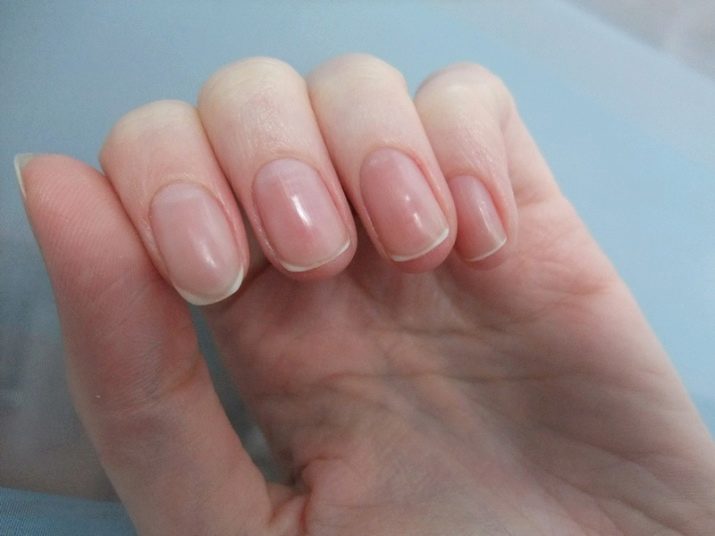
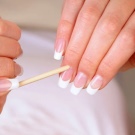
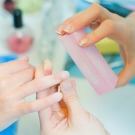
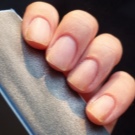
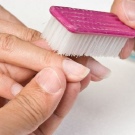
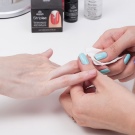
Extension technology
Nail extension on tips at home will depend on the type of tool used. In general, the technique cannot be called complex and requires any special knowledge with a deep study of them. Following the detailed step-by-step instructions for beginners, nail extensions themselves will not take much time, although the process will require accuracy and perseverance. The technique will be based on the type of material used.
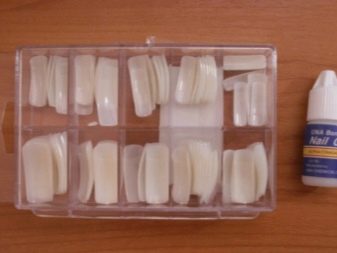
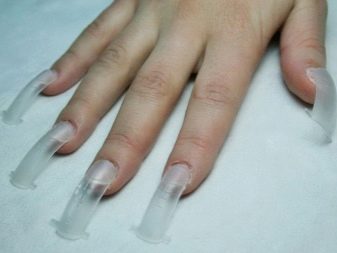
Gel
A UV lamp is used in the work. This technique is good in that it saves a ton of time and money. So, one set of tips lasts about 2 years. If desired, the buyer can purchase a kit, which, in addition to the blanks, includes the gel itself.
The phased execution of the workflow in this case will consist of the following sequential steps:
- after degreasing the nail, a primer adhesive material (primer) is applied to it;
- choose the most suitable template for the size of the nail, trying on it and determining the size, using markings for the form itself;
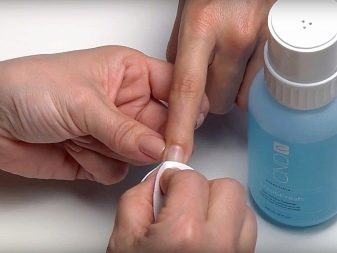
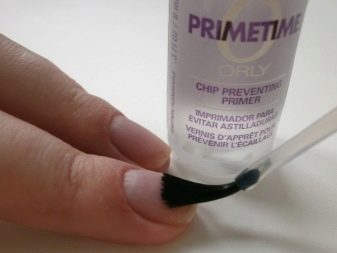
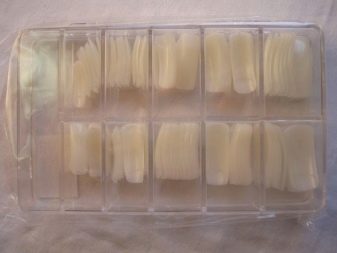

- they collect a little gel and put it with a brush in the inside of the tips;
- the modeling agent is distributed according to the size of the nail and stretched in length, while the material should continue the line of growth of the nail;
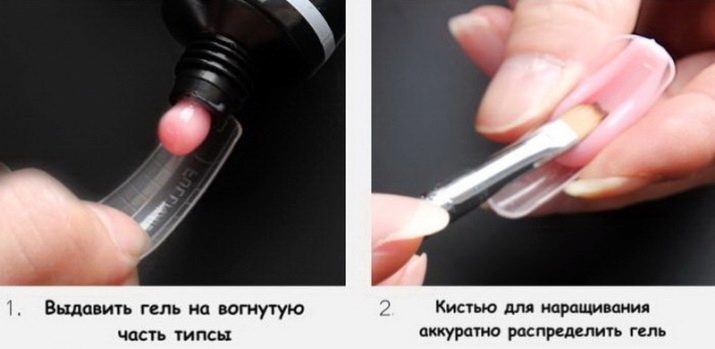
- the form is glued together with the gel to the nail being extended, pressing firmly;
- the nail is placed in a lamp for drying;
- after the desired time (2-3 minutes), the tips are removed;
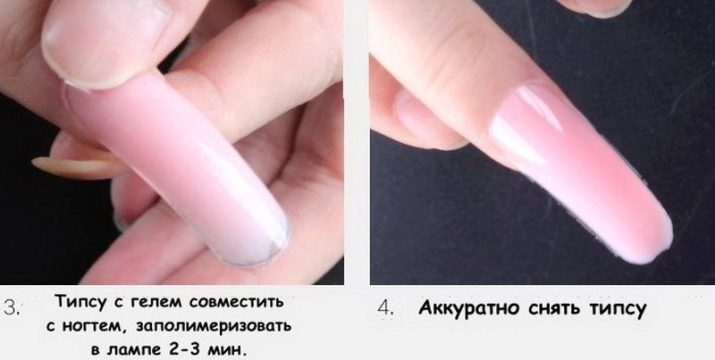
- a little more is applied to the base layer of the gel, forming a stress zone; you can use camouflage;
- the nail is dried in a lamp for 3 minutes, then the dispersion layer is removed and the end face is given the necessary shape;
- apply the top gel without an adhesive layer, it is dried in the device for several minutes.
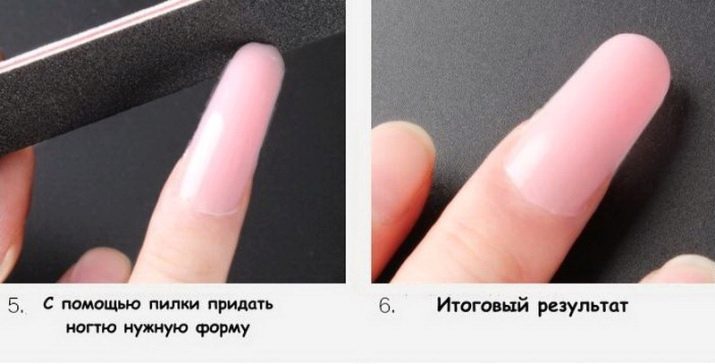
This method is convenient in that the tips are quite convenient to substitute for your nails. In addition, there is no need to glue the nails themselves, cut the material, achieving the desired length. However, in order to fully understand the essence of the process, it is worth watching the video material, which will greatly simplify the work with the gel. The fact is that the gel may not flow properly. Also, a rotary lamp may be needed in operation.
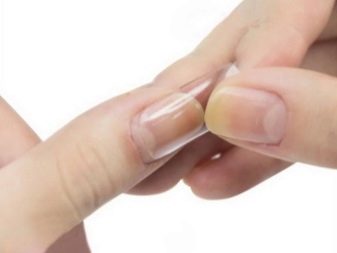

Acrylic
Acrylate is considered a quick-drying agent. It allows you to get a quality result without a lamp. Such nails are distinguished by their natural appearance and thickness, as well as elasticity. When working with acrylic, it is advisable to ventilate the room, since the material has a specific smell. In addition to tips, nippers and a special tool for dissolving acrylic may be needed in the work. In addition, it is desirable to stock up on a small container for dissolving acrylic.
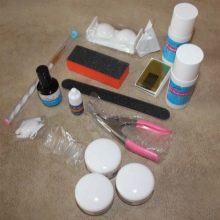
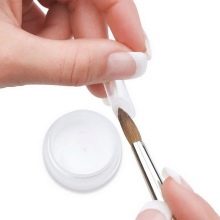
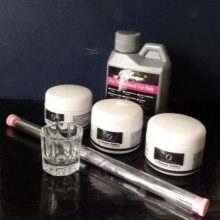
Having treated your hands with an antiseptic (alcohol), perform a hygienic manicure. After all its stages have passed and the nails are properly prepared, they select the correct tip size for each of their plates. In this case, make sure that the contact zone covers less than half the area of the plates.If preparation of the tips themselves is necessary, then they are laid out in order, depending on the selected options, and the edges of the contact zones are sawed.
The following is an extension algorithm:
- the nail is degreased, the glue is applied to the area of the contact zone and distributed with a brush; make sure that it does not spread, so they keep the tips at an angle of 45 degrees;
- the template is applied to the nail so that it touches the overgrown edge of its nail;
- the workpiece is pressed to the nail and held until he grasps;

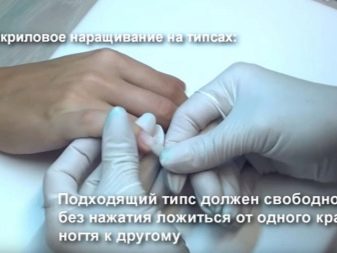
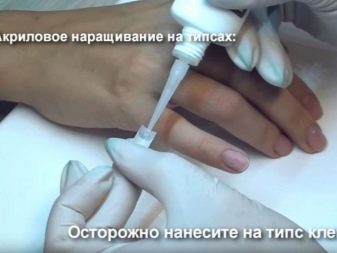

- the frame is given the desired shape, after which it is buffered and primed;
- acrylic powder is combined with the monomer, forming a creamy mass, a small ball is collected and distributed on the nail;
- form a cylinder of the transverse arch, giving the nail a bulge;
- excess thickness is removed with a file, a fixative is applied to the surface.

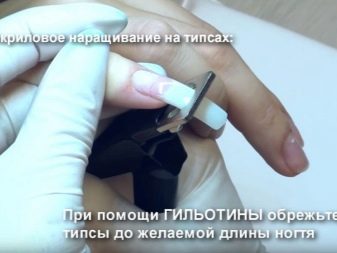
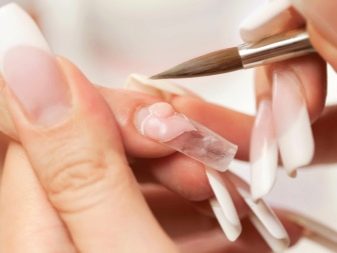
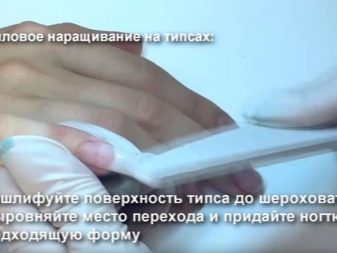
Design ideas
Perform on extended nails can be manicured in different techniques. One of the best solutions would be a French jacket, whether traditional or reverse. You can combine the colors of stackable materials, thereby creating an already ready-made design. If you do not like this option, you can turn to various techniques for nail design. For example, you can paint the nails with matte varnish, and on accents draw lace motifs with glossy material of the same color. The texture game always captivates the eye, such a design is in trend today.
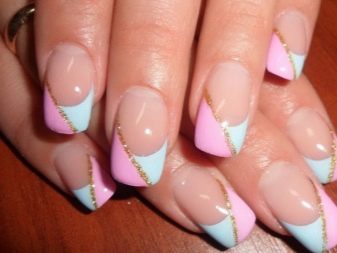
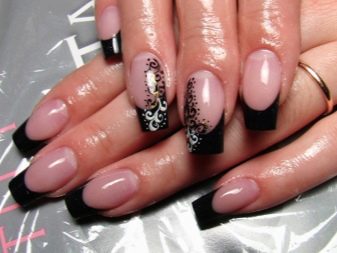
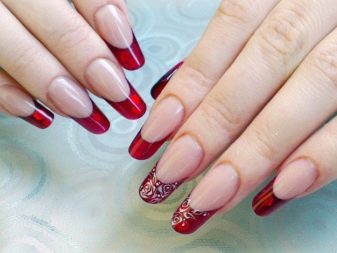
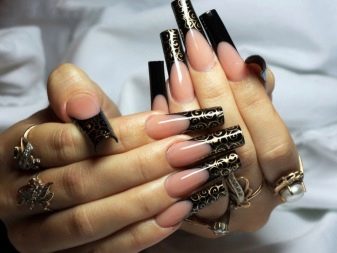
If you want something else, you can change the texture of the coatings of classic manicure. An excellent solution for this would be acrylic powders and rubs. At the same time, powder can not only cover the entire area of the extended nails: they are good for creating voluminous curls, monograms, lace, flowers. As for the cages, they look great on elongated nails of the varieties "May beetle", "mermaid" and "holography".
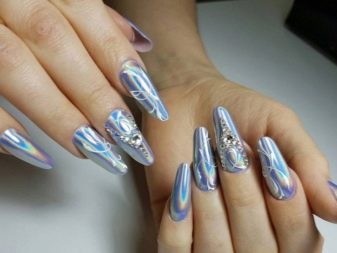
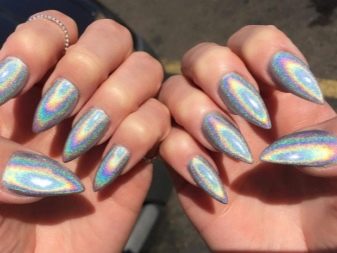
And you can also highlight manicure accents using hand-painted in various subjects and techniques, including watercolor, stained glass and spreading effect. When choosing the watercolor option, the substrate created by the base, pigment and top is buffered to make it rough. After that, on a working background, they draw with water-based artistic watercolor paints. And also for this technique, acrylic paints are also good, which are diluted to the desired consistency with the top.
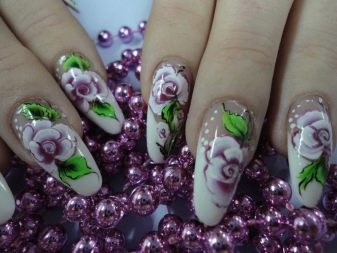
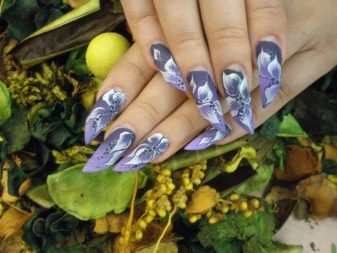
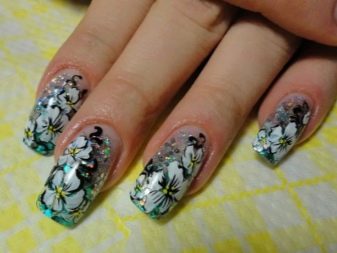
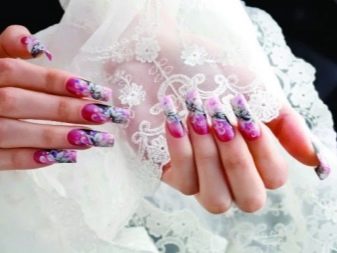
On the extended nails, Yuki's sequins look great, which are a kind of flakes in the form of rubbing. Today it is one of the hits of modern design, which allows you to give your nails a unique texture. It is very popular to decorate artificial nails with a dot pattern, which is created using a dot with different nozzles. It can be various ornaments, this technique draws a smile in a jacket. Sometimes the extension is performed with a variety of sparkles, mixing a modeling gel with various glitter. For greater shine, two shimmer layers can be used in the work.
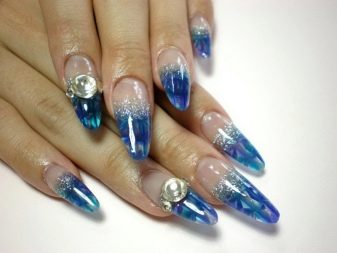
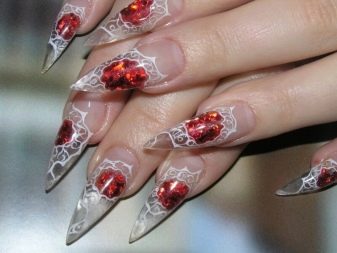
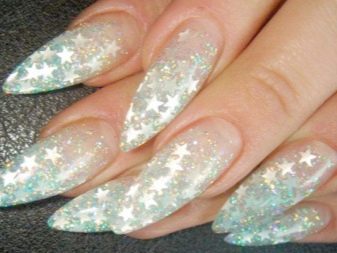
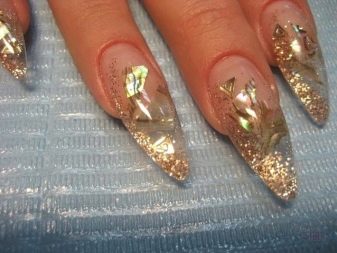
Care Tips
It is worth adhering to the following tips from professionals:
- so that the nails look beautiful and well-groomed longer, you need to monitor the condition of the skin, not forgetting to moisturize your hands with cream;
- it is advisable to protect them from frequent steaming and the use of household chemicals, since the coating will fade and darken from this;
- to avoid peeling, it is preferable to use rubber gloves when washing dishes;
- Do not stress the nails, avoiding a sharp drop in temperature, because this can cause extended nails to become cracked;
- if there is a need to remove the applied coating, you must use the product without acetone;
- do not injure your nails by tapping them on hard surfaces;
- as for the correction, it can be carried out no earlier than two weeks after the completion of the build-up; You can correct the shape after three weeks, although artificial nails can not be changed.
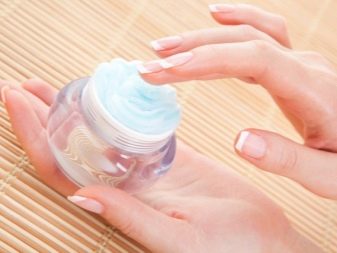
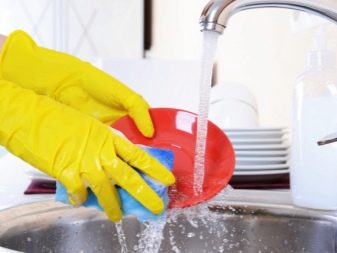
Reviews
Each woman can grow her nails at home, as evidenced by the reviews of women on the World Wide Web. Most of the comments are devoted to the fact that this process takes a lot of time, but it allows you to get good and strong nails, saving a lot of money on the salon procedure. Extension at home has become a real find for modern women, because it is affordable and allows you to refine the shape of nails, as well as add space for print, slider design, thematic or seasonal decor.
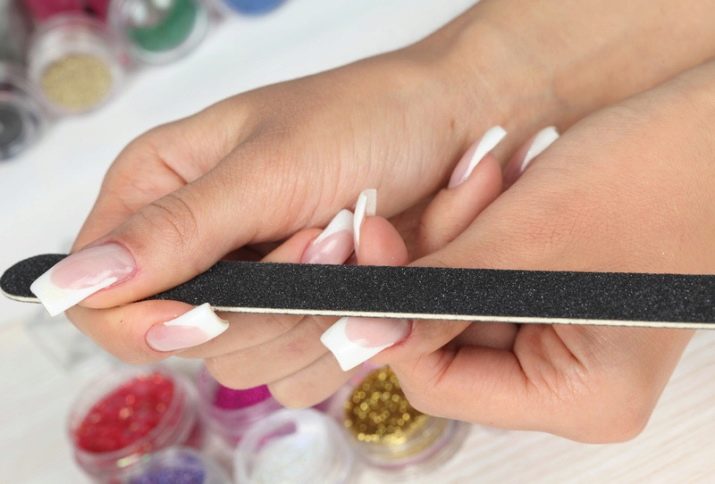
See how to do acrylic extensions on tips in the next video.










